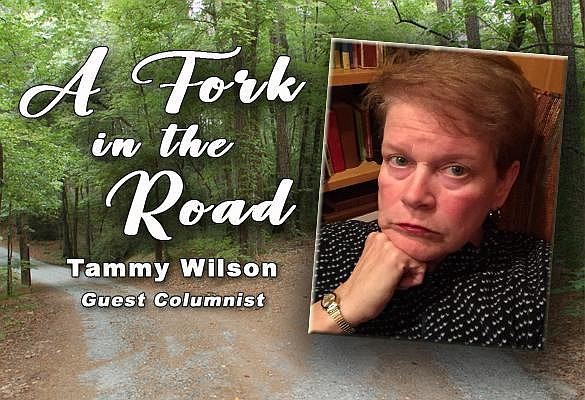March 26, 2024 at 9:03 a.m.
A few years ago, I shared a story about my ancestor who was part of the California Gold Rush. The year was 1850 when my great-great grandfather John Wesley Cooper, his brother William and some 40 others from Will County, IL left home for the adventure of a lifetime.
When I first wrote about this, I had come upon the transcription of William’s diary began on May 12, just days after the wagon train left St. Joseph, MO.
The handwritten narrative details each day, usually breaking up camp before sunup to beat the heat of the day. William tells of shooting three rattlesnakes in one day, or fording rapid streams in Wyoming, stopping for supplies at trading posts, trudging up steep trails toward Salt Lake City. There they sold their wagons and packed horses and mules to finish the journey on to the newly minted state of California, arriving on Aug. 8.
While many romanticize the journey west to gold country, not many of us consider how the miners returned home, if at all.
Family legend says the brothers staked their claim along the American River. John Wesley, had less luck panning for gold than he did selling groceries and other goods to the miners. By 1852, he made his way home wearing his gold-laden vest, sailing from San Francisco to Cape Horn, Chile, the southernmost tip of South America, and on to New Orleans, and the Mississippi River. I have no details of this venture other than my imagination: squalls, seasickness, dismal rations and being on guard for thieves.
A Will County history book tells a bit more about William’s journey home. He boarded a ship from California to Panama, where he crossed the Isthmus, that narrow strip of land separating the Pacific from Atlantic. The Panama portion of the trip would have involved more than 50 miles over lakes and rivers and as well as a narrow trail through mangroves and undergrowth. Reaching the Caribbean shore, he boarded a revenue cutter for New York, then west by train and stagecoach to Illinois.
My Dad told me that John Wesley’s vest existed into the 1920s, retaining the imprints of coins that had been sewn into the lining for safekeeping. By the time he saw the garment as a boy, the hidden coins were long gone.
Three weeks ago, I visited Panama for the first time. One day, while visiting ruins of the 16th century Fort San Lorenzo, overlooking the Chagras River, our guide pointed to the foot of the bluff, where once there had been a thriving village. At the time of the Gold Rush, locals offered food, lodging and supplies for ‘49ers on their trek home from California.
My tour guide in was amazed to meet an American with family ties to the Gold Rush era of Panama’s history. Few who visit know they had a ‘49er in the family, much less one who came through Panama.
I tried to take it all in. This place along the river, under that thick underbrush, William Cooper would have stopped to rest from the arduous trip. By then he would have been 25 years old. He had disembarked his ship at the Pacific shore, then boarded a boat as far as the ancient Camino de Cruses, the ancient cobblestone road headed toward the Caribbean shore.
The 14-mile section used by the ‘49ers would have taken about two days to travel, all the while being on the lookout for bandits, snakes, scorpions and, of course, mosquitos. Panama’s jungle, remember, was the hotbed for malaria and yellow fever that claimed some 12,000 lives in the building of the railroad and another 25,000 lost in constructing the Panama Canal.
Back in the early 1850s, the Panama railway wasn’t yet completed. And there was certainly no Panama Canal. That project wasn’t completed until 1914—more than 60 years into the future.
On the overland route to California, Coopers and their companions endured blistering heat, fierce wind, stampedes, scarcity of water, steep trails, disease, wildlife and the potential of hostile Indians. Once in California, life in the mining camp offered its own challenges.
And then the trip home? Without doubt, these brothers were a couple of tough birds.
Once in New York City, William would have ridden a ferry across the Hudson (there were no bridges at the time), headed west for Chicago, and then south 40 miles to the family farm in Will County, IL.
---Tammy Wilson is a writer who lives near Newton. Contact her at [email protected]






Comments:
You must login to comment.